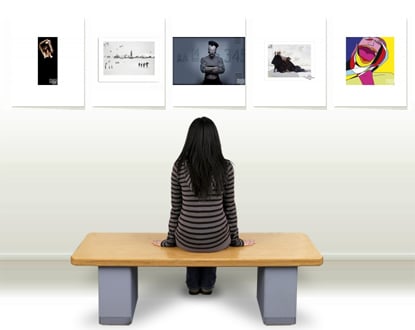[->] A new “Digigrapher” art printer in Nice has just been accredited by the Epson company for art printing in our region. The creation of the Digigraphie label is relatively recent. Digigraphie® was officially launched on November 13, 2003, on the occasion of the centenary of the Salon d’Automne. But its practice is much older.

Digigraphie® is the result of many years of research by the Seiko Epson group on the technical performance of its printers and on the quality and resistance of its UltraChrome™ pigment inks. Digigraphie® is a technical label that allows the production or reproduction of a work of art in a limited edition. It opens new perspectives for artists, as well as for museums and art galleries. From now on, each creation can have its digital replica. A replica jealously preserved, as each reproduction is numbered, referenced, and signed by the artist. Digigraphie® is a label of excellence that meets specific criteria and strict uses. It guarantees its value and the condition of its success.
Origin
For several years, photographers, sculptors, and painters, as well as service providers (photo labs and lithographic workshops), have been using Epson printer technology to make prints on art paper. Thus, they pave the way for a new discipline: the digital reproduction of a work of art.
In search of a name
But what name should be given to a high-quality digital art print made on an Epson printer? This question arose in 1991 in the United States when Jack Duganne, a master printer at Nash Editions, sought a generic term to describe the works of artist Diane Bartz, made using inkjet technology. He first used the French term “jet d’encre,” then “gicleur,” and finally “Giclée.” A new label was born. (Source: “Digital Printmaking” by Harald Johnson, Eyrolles editions)
French artists also face the same problem as Duganne. They immediately reject the expression “jet d’encre,” which they find inappropriate for an art print. Some of them then decide to create their label. This is the case for Philip Plisson, an artist specializing in maritime photography, who creates “Pixographie,” or Jean-Noël l’Harmeroult, a famous photographer, who names his works “Hyperchromes.”
These two image professionals use a personal label to describe their limited edition art prints created with Epson professional photo printers. The introduction of the “Digigraphie®” label
In response to these developments, Epson France registered the name Digigraphie® with the INPI (National Institute of Industrial Property) and the OHIM (Office for Harmonization in the Internal Market) in 2003. The brand then became European. Anyone who complies with the usage rules can now use this label.
The Papers?
Approved Digigraphie papers have undergone light resistance tests to guarantee a lifespan of more than 60 years under normal indoor exposure conditions. These tests were carried out by independent laboratories to ensure the impartiality of the results. The list of papers evolves from time to time and includes smooth or textured art papers, canvas, and photo papers.
Four brands are currently represented: Epson, Arches, Canson, and Hahnemühle.
Limited Edition?
A “Digigraphie” is necessarily a limited edition print, with a maximum of 30 copies (the artist is free to choose the number of prints of their work, from 1 to 30). It always bears a number indicating the total number in the series and the number of the print (for example: 5/30 for the fifth print in a series that will not exceed 30 prints in total).
How to recognize a work in Digigraphie?
A “Digigraphie” is necessarily marked with an official stamp identifying who printed it (embossed stamp for paper or ink stamp for canvas).
A “Digigraphie” is necessarily accompanied by a certificate of authenticity that provides all the relevant details: paper type, author’s name, printer’s name, print date, series size, print dimensions, etc.



